Tennis
ATP Tour: The Unfinished – The 10 best men without Grand Slam title
These ten players have had a glittering career with one minor flaw: the missing victory in a Grand Slam.
What do David Ferrer, Tomas Berdych, Jo-Wilfried Tsonga and Kei Nishikori have in common? Right, all of them haven’t won a Grand Slam tournament yet. But for all these players, the time as a professional tennis player is not yet over. That’s why they all still have the chance to win at least one of the four major tournaments. If they don’t succeed, they could all end their careers and end up in the list of the best female players without Grand Slam titles, which tennisnet. com presents in a top ten list.
It took a long time for Cedric Pioline to win an ATP tournament. The first nine finals were lost. After all, the Frenchman still had five ATP titles, but in his two Grand Slam finals, 1993 at the US Open and Wimbledon in 1997, Pete Sampras was far too strong. In addition, there will be two further semi-finals in the Grand Slams. Pioline, who conducts the on-court interviews at the French Open, made it to fifth place in the ATP ranking.
Guillermo Coria was one of the best clay court players of his time. But the very short career of “El Mago”, the mage, as the Argentinean was called, was paved with negative climaxes. At the age of 19 in April 2001, Coria was positively tested for Nandrolone and was banned for two years. However, the ban was reduced to seven months as it could be demonstrated that a foodstuff contained the prohibited substances. After that, the little Argentinean player got off to a good start and was the outstanding clay court player in 2003 and 2004. Coria scored a total of nine tournament victories in his career, which put him in third place in the world rankings. But at the French Open, however, he lost his nerve to the then tournament favourites. In 2003, he lost to Dutchman Martin Verkerkerk in the semi-finals, and in 2004 he met his fellow countryman Gaston Gaudio in the final.
Gaudio was initially without chance against the magical powers of “El Mago” and was shown. Up to 6:0,6:3 and 4:4 Coria had everything under control before the thread broke. In the fifth set he served twice for the French Open victory, had two match points and finally lost. Coria did not recover properly from this defeat. Many injuries then paved his way. Much worse, however, was the fact that the “yips” caused him problems on serve. The “Yips” are involuntary twitching of the hands or forearms that hindered Coria’s impact and led to numerous double faults. Anna Kournikova also suffered for some time from the “service yips”. Coria could not recover from his serve weakness. 20 double errors per game were not uncommon. In 2008, at the age of 26, Coria played his last professional match, which he gave up due to injury.
What if it is?! This question fits in with the career of Tommy Haas, who has meanwhile been number two in the world and has been a face of the ATP tour for two decades. Haas did not make the big breakthrough. He hasn’t officially finished his career yet, but for a few tournaments to say goodbye to professional tennis on his own terms, it will certainly not be enough for the 38-year-old. Whenever the big breakthrough was imminent, Tommy Haas suffered an injury, a blow of fate (parents’ motorcycle accident) or, in the end, he was often standing in his way of becoming the world’s best player. There are 15 tournament victories to book, but the really big successes are missing in the vita of Haas. Four semi-finals in Grand Slam tournaments (three times Australian Open, one time Wimbledon) and a silver medal at the Olympic Games 2000 in Sydney are the milestones of the German team. Haas will continue to be a face of the tour after his active career, as Tournament Director in Indian Wells.
Nikolay Davydenko has been one of the most consistent players on the ATP Tour for many years and has enjoyed his greatest career successes with his triumphs at the 2009 ATP World Tour Finals in London and the Davis Cup title in 2006 with Russia. The fact that Roger Federer, Rafael Nadal and Novak Djokovic were always in the way was one of the reasons why it wasn’t enough to win a Grand Slam title. The Russian made it to the semi-finals four times in a Grand Slam tournament, twice in both the French Open and the US Open,”I am 33 years old. I have won 21 ATP tournaments, including three ATP Masters 1000 tournaments and the ATP World Tour Finals in London. I have no regrets that I did not win a Grand Slam tournament or that I was not number one in the world. I was in the top ten for a few years,”Davydenko explained in 2014 on the sidelines of the ATP tournament in Moscow. The Russian was number three in the world and can be particularly proud of a fact. He has retired his positive record against Rafael Nadal. Davydenko, along with Novak Djokovic, is the only player to have a positive record against Spain, with at least three victories.
Tom Okker is the most successful Dutch player after Richard Krajicek. While it worked in doubles with two Grand Slam titles, it should not be in singles, where he can boast a total of 26 ATP titles. Okker reached the final of the US Open in 1968 and was defeated by Arthur Ashe in five sets. At every Grand Slam he made it to the semi-finals. In the world ranking, the Dutchman finished third in the meantime.
Alex Corretja was a classic sand-court specialist, a vole who felt at home on the red ashes all over the world. Of his 17 tournament victories, Corretja won eleven on clay. Twice, the Spaniard made it into the final of the French Open. But in 1998 his compatriot Carlos Moya and in 2001 Gustavo Kuerten was too strong for the Catalan. At the other Grand Slam tournaments, Corretja played with moderate success. He reached the quarter-finals at the 1996 US Open and lost in a memorable match Pete Sampras, who had to throw up in the tiebreak of the fifth set.
At the beginning of 1999 Corretja ranked second in the world ranking. His greatest success in his career, which he did not succeed at a clay court tournament, was the decisive factor in the rise of this friendly and fun-loving Spaniard. He sensationally won the title at the 1998 ATP World Championship in Hanover. After defeating Pete Sampras in the semi-finals, he took revenge on Carlos Moya in the final for his defeat at the French Open, beating him after a 2-0 setback. Alex Corretja’s career was over in 2005. An eye injury did not allow for competitive tennis anymore.
Miloslav Mecir is remembered for his elegant playing style. His way of playing tennis seemed effortless, as if it meant no effort. That’s why he was nicknamed “the cat”. For most tennis players, the Czechoslovakian was an opponent of fear because it was so difficult to stand up to him. The then world number one Mats Wilander, in particular, repeatedly bit his teeth out on Mecir. Mecir, who was regarded as the “Sweden killer”, has a 7:4 record against Wilander. The Czechoslovakian made it to the finals at the 1986 US Open and the 1989 Australian Open, but lost both times to Ivan Lendl. In the US open-ended final, Mecir even played with his old wooden racket. In no other Grand Slam final was a wooden bat used by one player.
At the French Open and in Wimbledon, Mecir was also in the semi-finals. But it was not enough for the “man with a full beard” at the four Grand Slam tournaments. Mecir often stood in the way of himself. The loner, who travelled around the world without a trainer, lacked consistency. After great victories, bitter defeats followed again and again. The Czechoslovakian won a total of eleven tournaments and finished fourth in the world rankings. His greatest triumph will undoubtedly be the gold medal at the 1988 Olympic Games in Seoul. In the final Mecir defeated the American Tim Mayotte. At the young age of 26,”Die Katze” stopped his career due to persistent back problems.
Todd Martin was called the “professor” in the tennis scene. This was not because of the fact that he already had 20 grey hairs at the beginning, but because he was talking so slowly and always thought a lot before he spoke. With his body length of 1.98 meters, the American was one of the biggest players on the tour at that time. His game was based on Serve-and-Volley, with which he achieved eight tournament victories and advanced to fourth place in the world rankings.
Twice in his career Martin was in a Grand Slam finale. While he was clearly defeated by Pete Sampras at the 1994 Australian Open, he had his sights set on winning the 1999 US Open final against Andre Agassi. The US-American almost made it into the final of Wimbledon. In the semi-final in 1996 against his fellow countryman MaliVai Washington Martin led 5-1 in the fifth set, before he got a heavy arm and lost the match. Away from the court, Martin was a pleasant player who was very committed to the interests of tennis. For three years he was President of the Players’ Council and twice won the “Sportmanship Award” for his athletic conduct. In the meantime, he has become Managing Director of the International Tennis Hall of Fame in Newport.
“I was very fortunate and unlucky at the same time,”David Nalbandian summed up his career after announcing his resignation for chronic shoulder pain in 2013. Nalbandian reached the final in Wimbledon in 2002. At the Australian Open, French Open and US Open he was in the semi-finals. But his biggest chance for a Grand Slam title was probably at the US Open 2003, when he missed a match point in the semi-finals against Andy Roddick in the third set and finally lost. In the final, Juan Carlos Ferrero would have waited and Nalbandian would have had a great chance to win the title. The “Gaucho” won a total of eleven ATP titles and made it to third place in the world ranking.
His biggest success was winning the Masters Cup (today’s ATP World Tour Finals) in Shanghai in 2005, when he beat Roger Federer in the final after a 2-0 setback and finished the Swiss victorious series (35 wins in a row, 24 finals in a row). The triumph at the 2007 ATP Masters 1000 Tournament in Madrid (then an indoor hard court tournament) was also of historic importance, as Nalbandian won the title with Rafael Nadal, Novak Djokovic and Federer, successively defeating the world’s number two, three and one. But Nalbandian also caused a stir with some outbursts. At the lawn tournament in Queen’s in 2012 he was disqualified because of a kicking against the advertising gang of the Linienrichter chair. At the Australian Open 2012, he was fined for splashing a tournament employee with water after his unlucky retirement.
Marcelo Rios was an “Enfant Terrible” and the “Bad Boy” during his active time. The Chilean, who has been voted the most disagreeable player on the Tour on several occasions, also impressed with his incredible talent coupled with an extreme feeling for the ball. Rios won 18 tournaments in his short career (including five master competitions) and was the first South American to make it to the top of the world rankings in 1998. In the four Grand Slam tournaments, however, the Chileans did not reach the very top. Rios lost his only Grand Slam final at the Australian Open 1998 against Czech Petr Korda in three sets. A defeat that still pains the Chileans today, as Korda was transferred to Wimbledon of doping in the same year. By 2015, Rios had applied to the ITF to investigate the final in Melbourne. However, this was rejected.
To this day, he is still the only world number one in men’s tennis who could not win a Grand Slam tournament. Again and again the Chilean man had to fight with injuries and had to end his career in 2004. It is significant that he had to give up in his last professional match. In the square, the left-hander with his ponytail repeatedly amazed the spectators with his sensitive, varied play. Many experts trusted him with several Grand Slam victories. Away from the square, Rios was a mystery. The shy Chilean man avoided the public, rarely gave interviews and was not very popular in the tennis scene,”he is the biggest fool I’ve ever met”, the former world number one Ilie Nastase jostled over the Chilean player. Again and again Rios caused scandals and negative headlines. After a fight with a taxi driver and the police, he was arrested, as well as after a struggle in a bar in his hometown of Santiago de Chile.


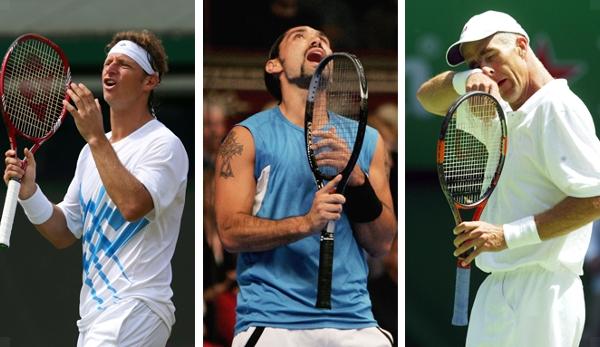



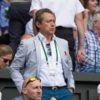

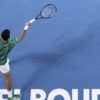

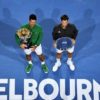

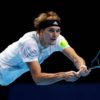
You must be logged in to post a comment Login